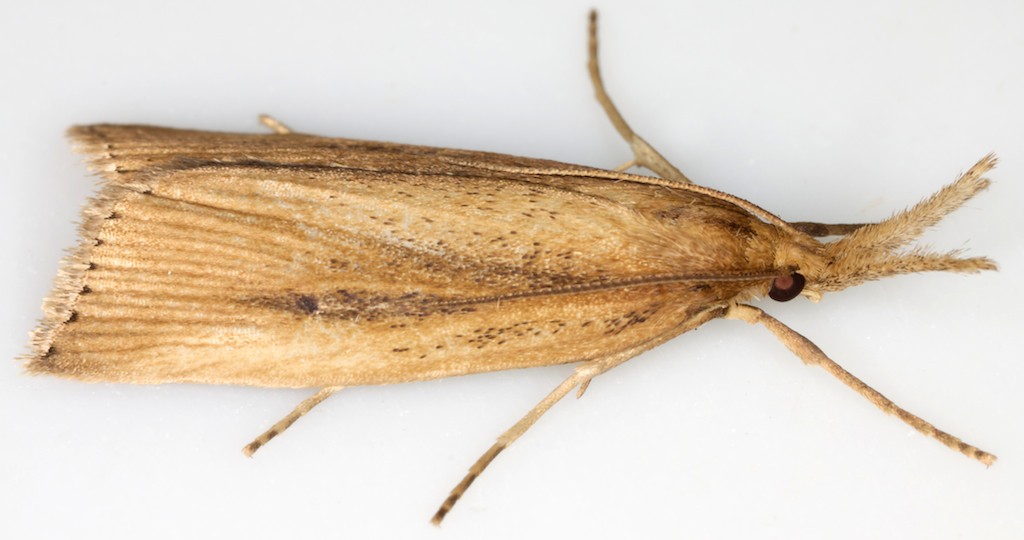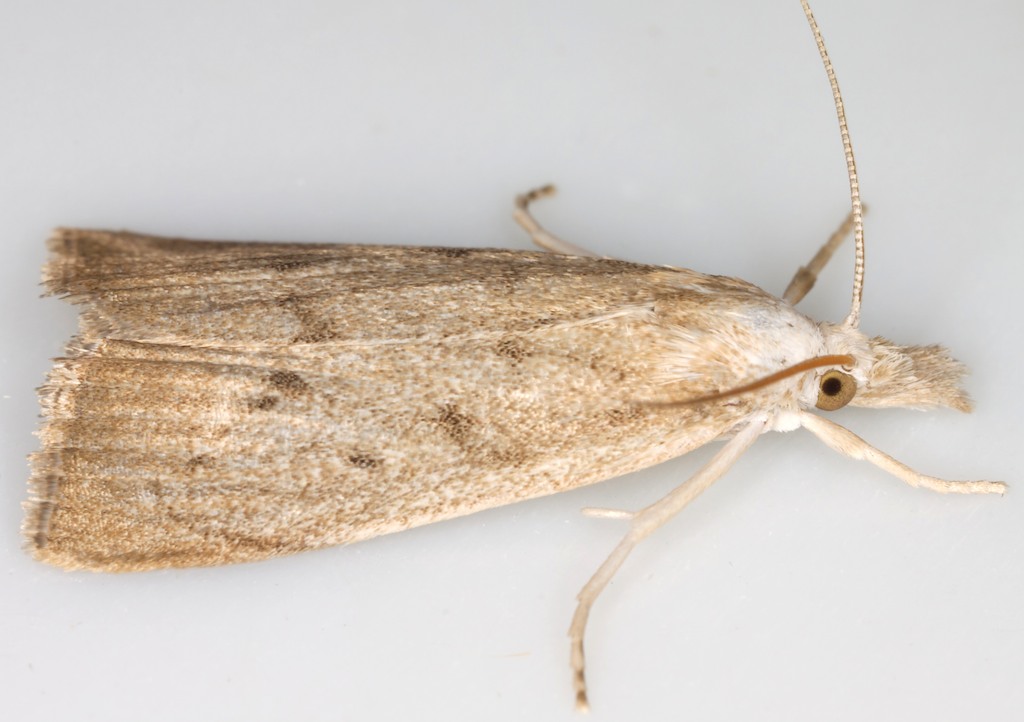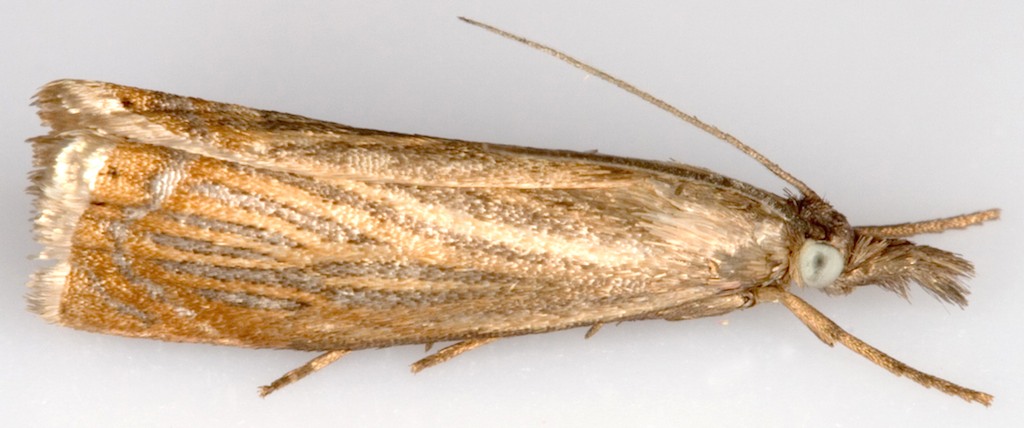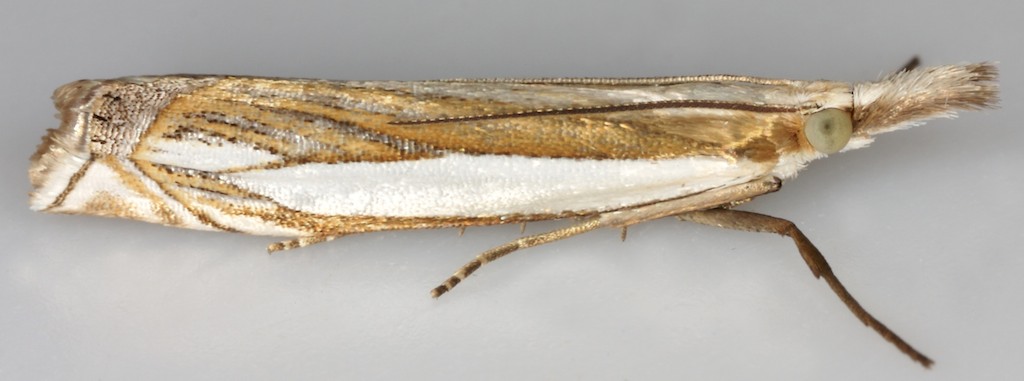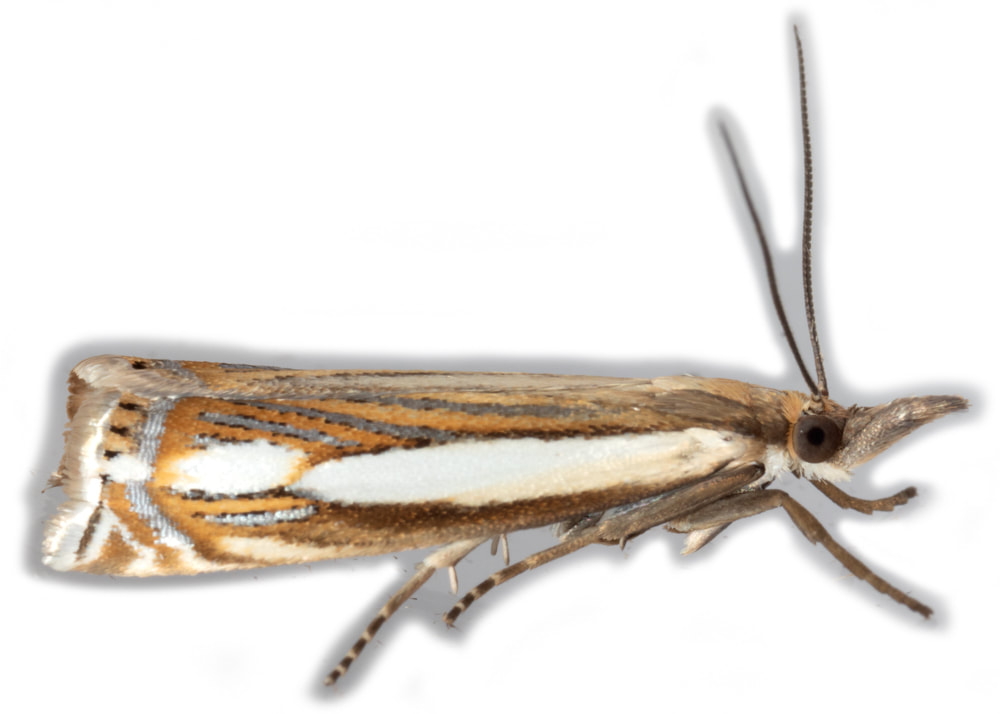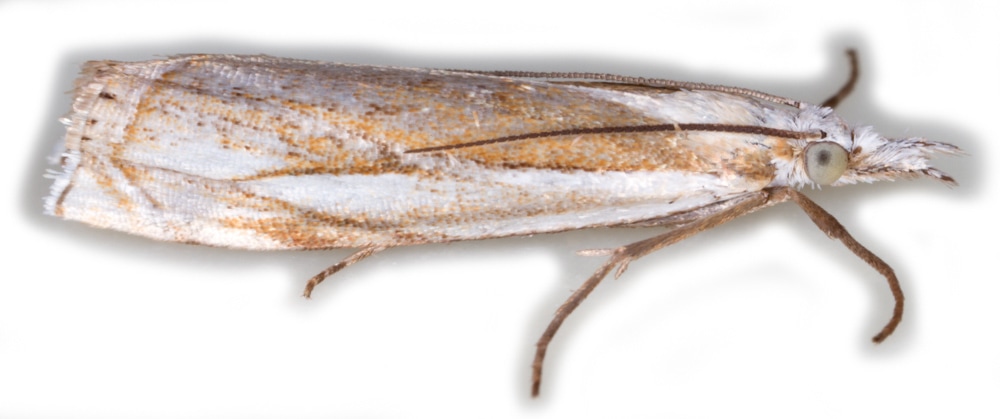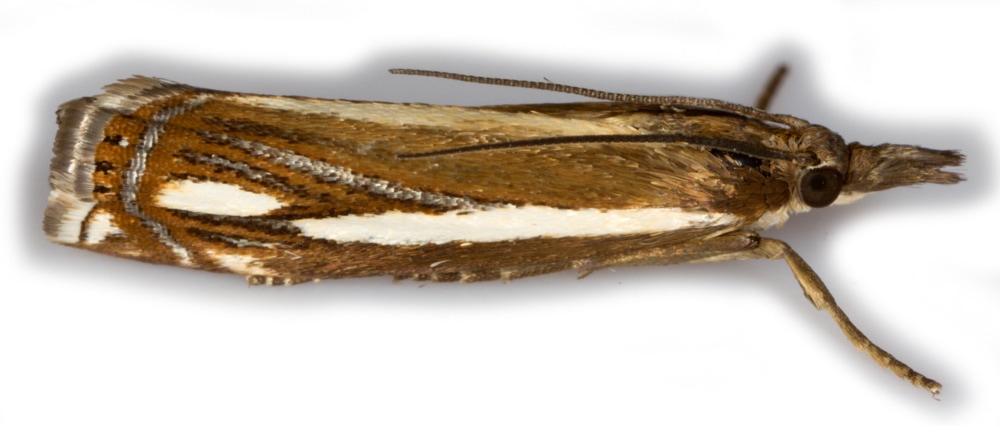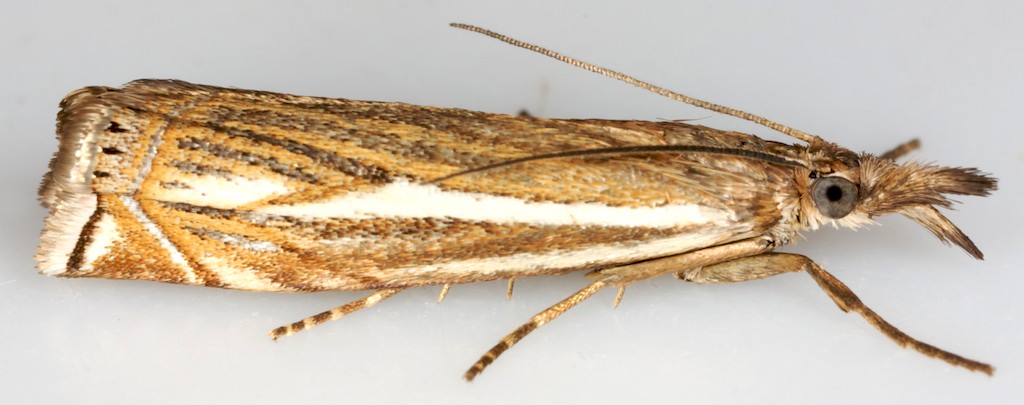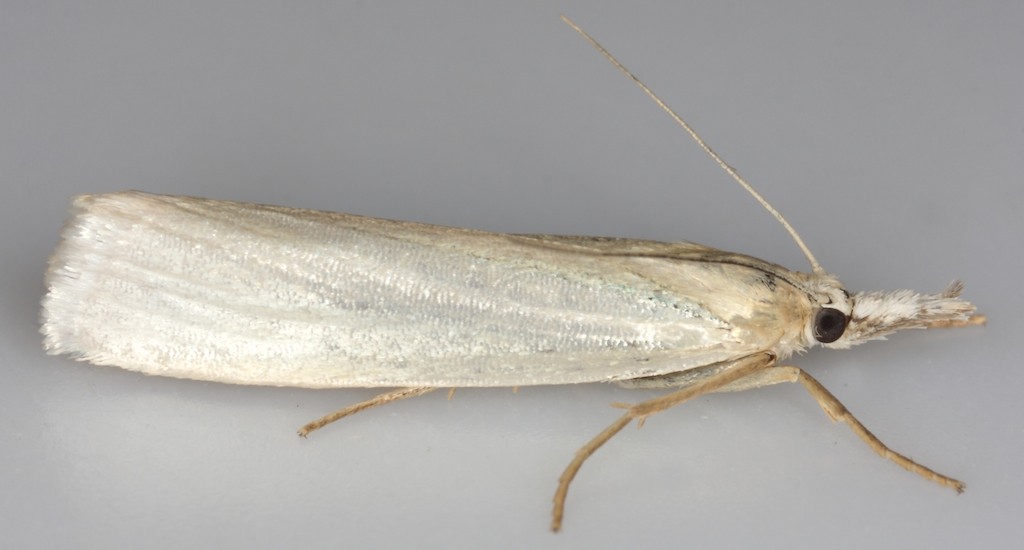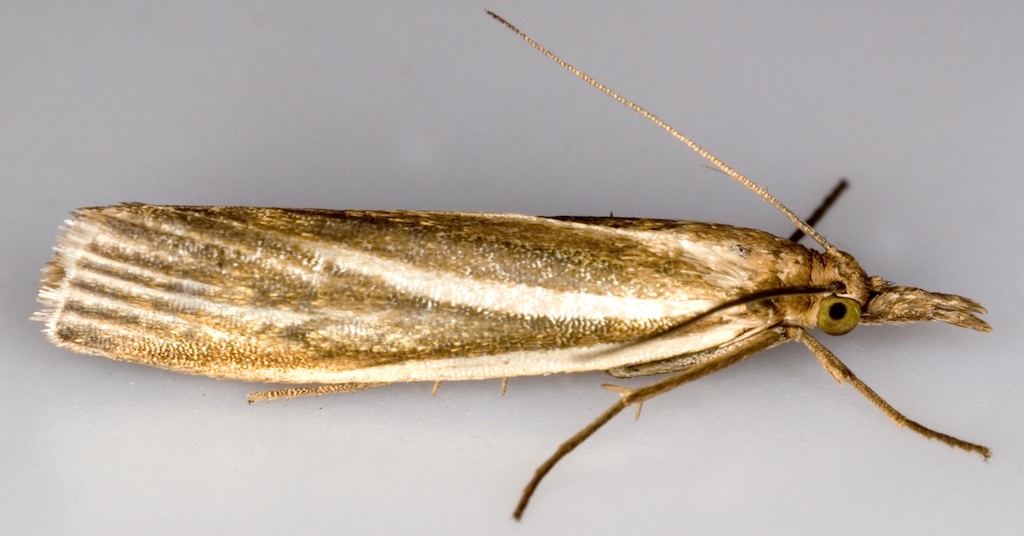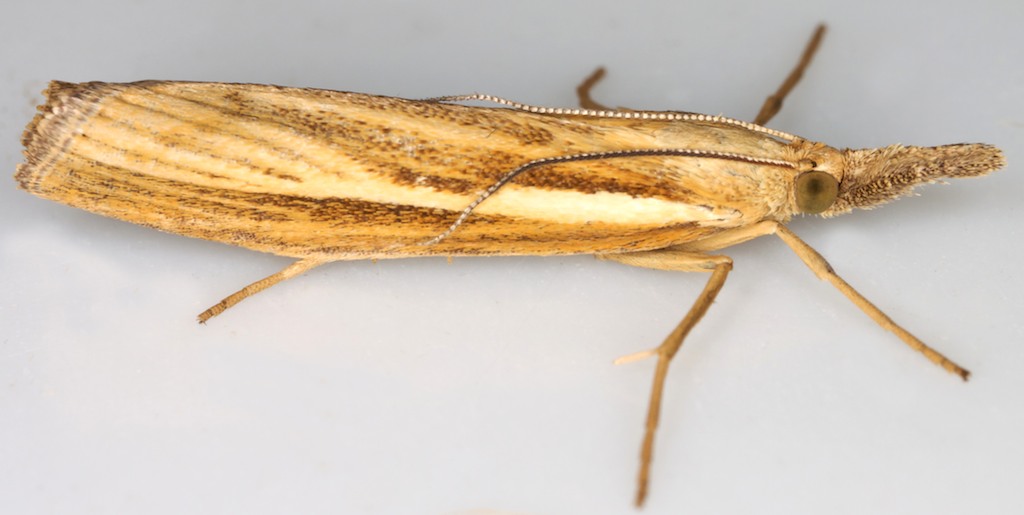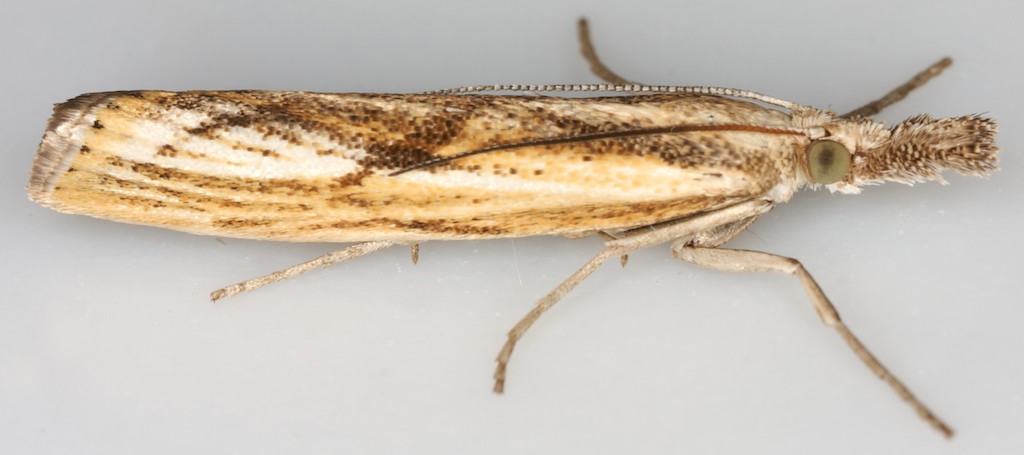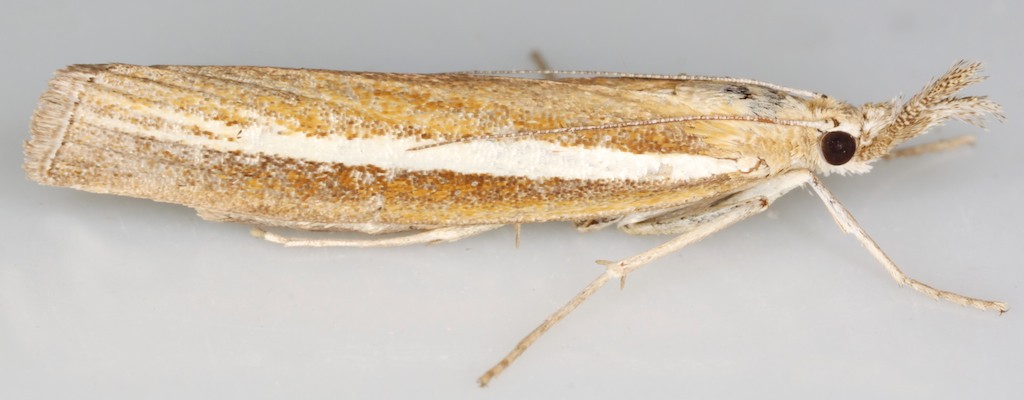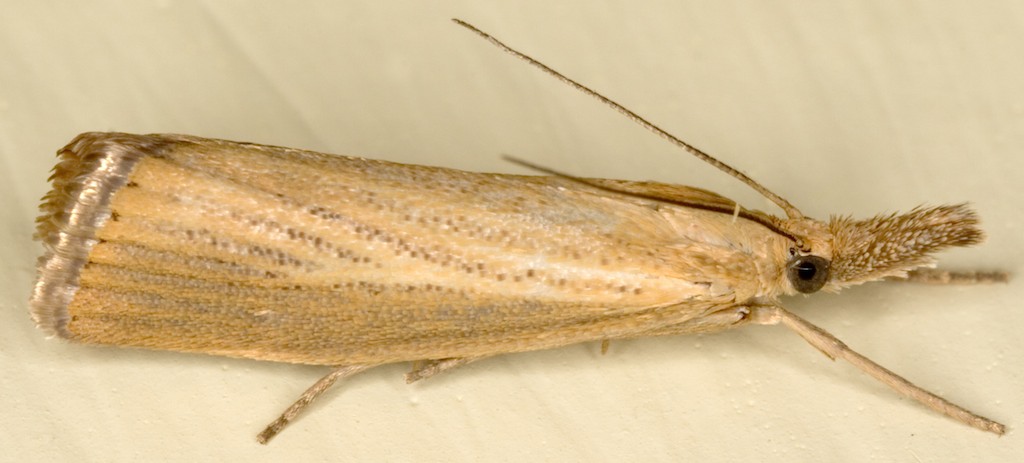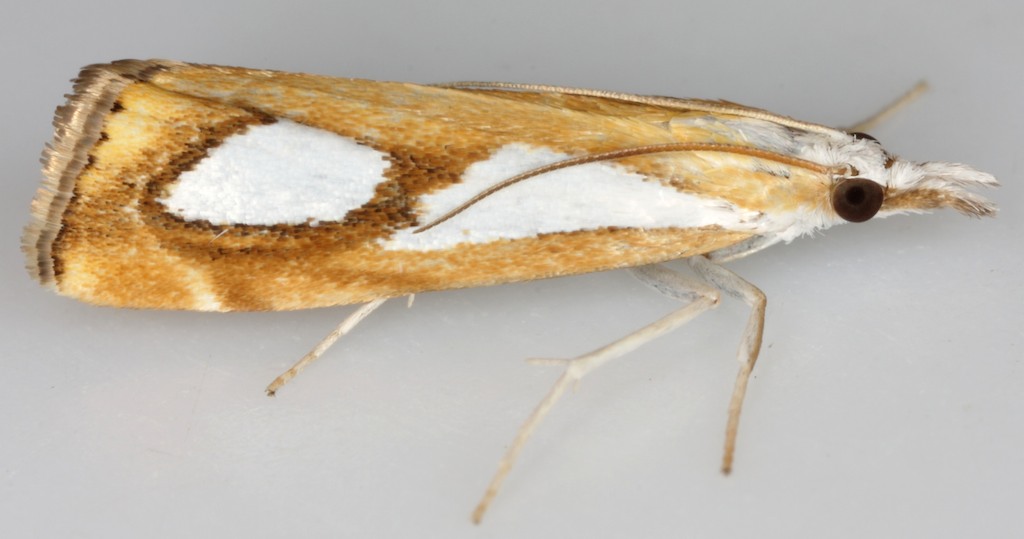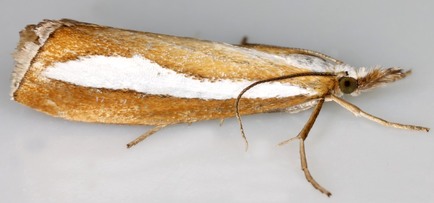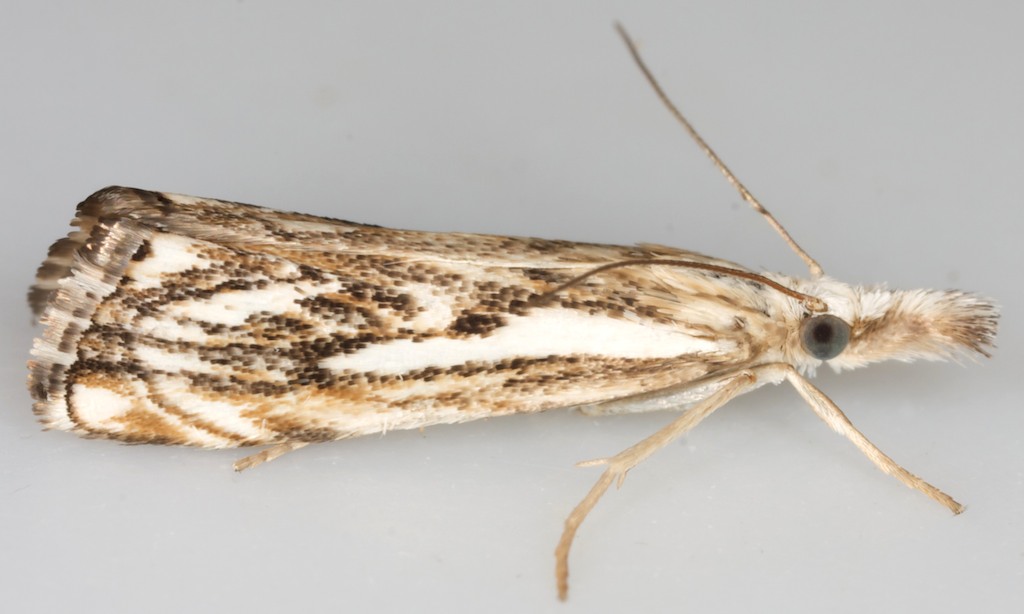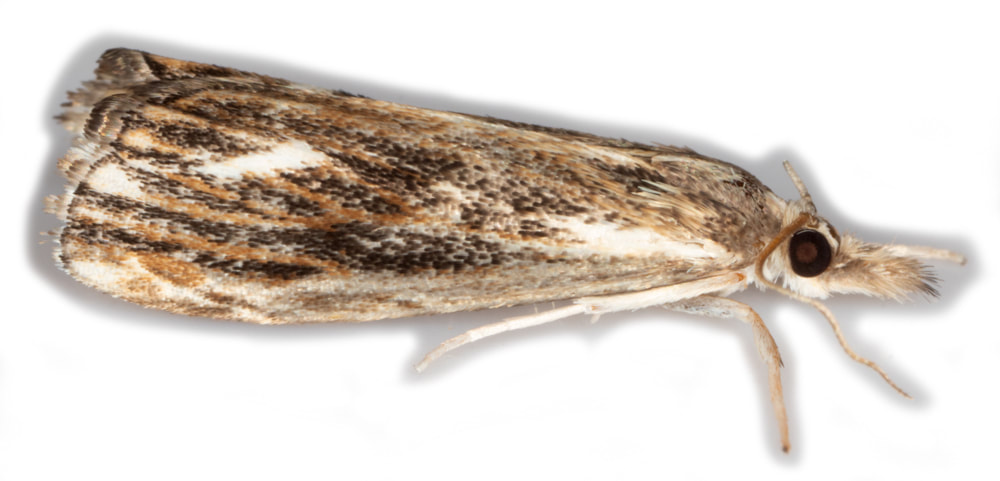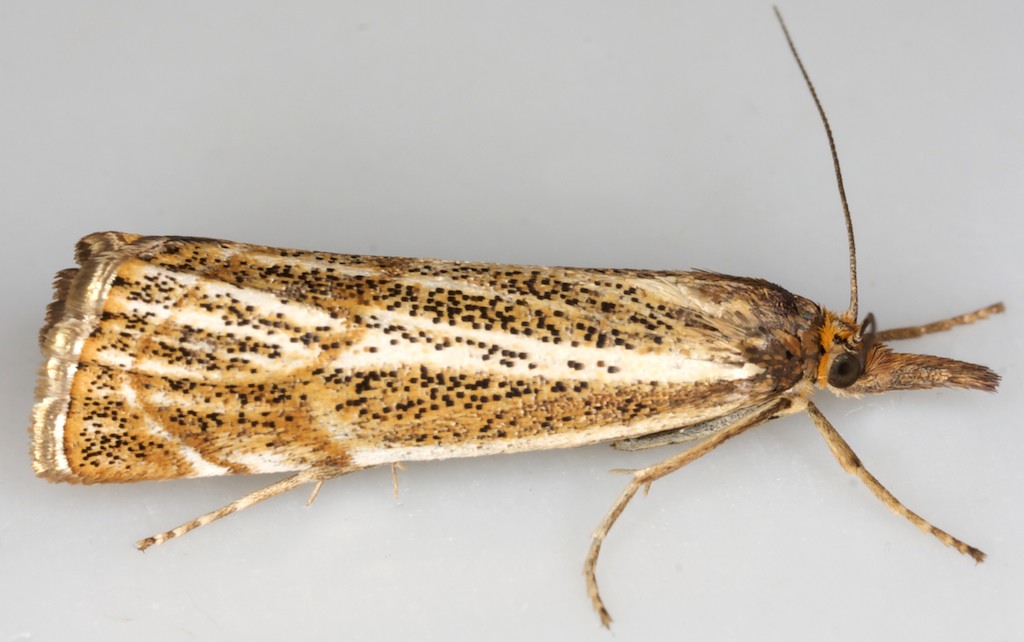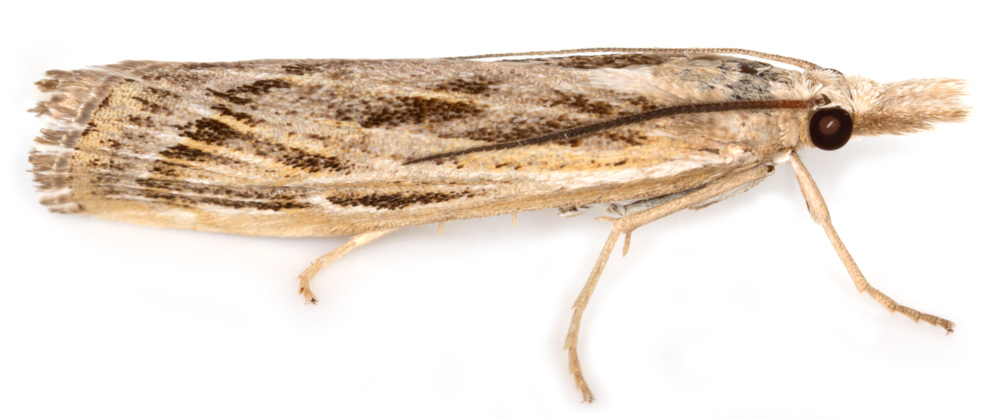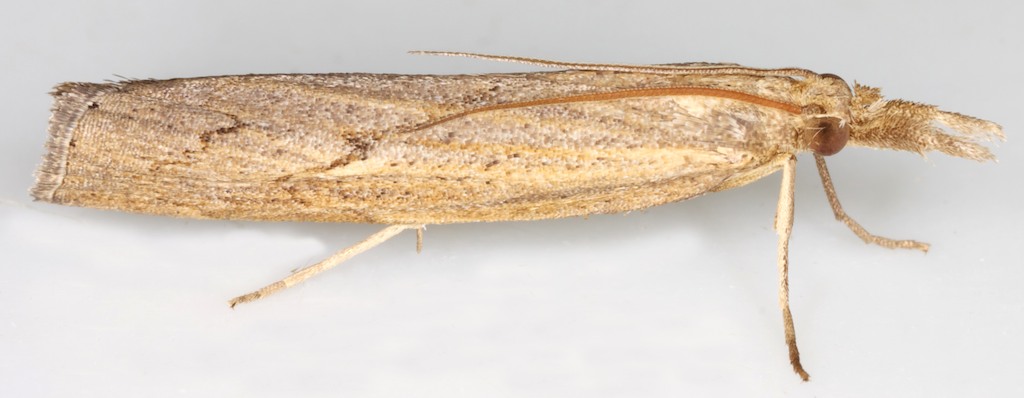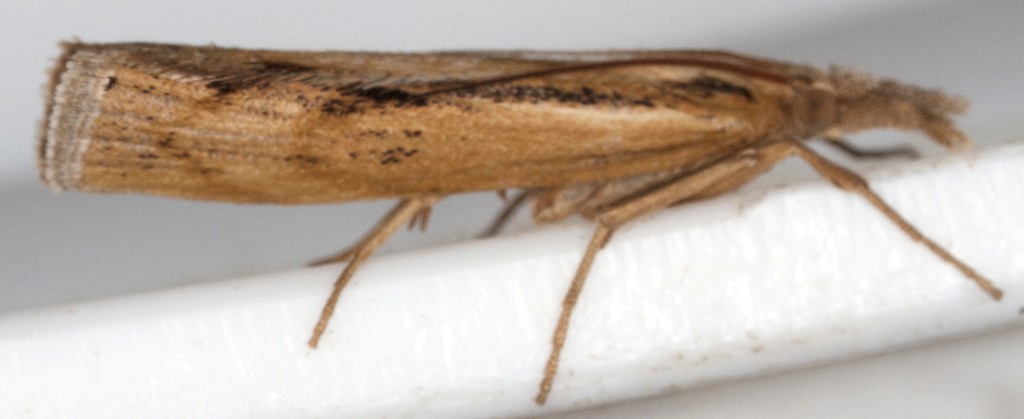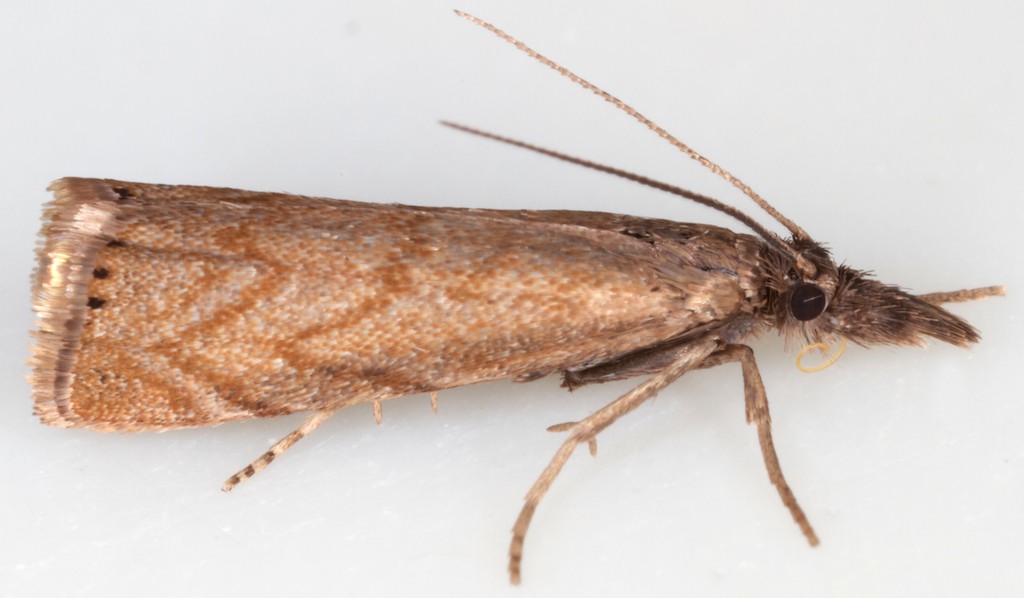Subfamily: Crambinae (13G 6T 38S)
The grass moths - characterised by narrow forewings and broad hindwings, so that they look much larger in flight than at rest.
Easily disturbed from grasses during day and settle head-down with wings wrapped tightly around body, on grass stems.
Easily disturbed from grasses during day and settle head-down with wings wrapped tightly around body, on grass stems.
|
Tribe: Euchromiini
|
Tribe: Chiloini
|
|
Tribe: Haimbachini
|
Tribe: Calamatrophini
|
Tribe: Crambini
|
|
Friedlanderia
078 Friedlanderia cicatricella
(Club-rush Veneer) ws: m21-24mm f34-38mm; Jul-Aug rare migrant 25 British records 1852, 1951 and the rest since 1999, nearly all in East Kent |
Calamatropha
079 Calamatropha paludella
(Bulrush Veneer) |
Chrysoteuchia
080 Chrysoteuchia culmella
(Garden Grass-moth) |
Crambus (8S)
6 Crambus species have a white median forewing streak, which is cut obliquely by a dark line at ⅔-¾, and a distinct angulate subterminal line. This pattern is not shown by any other Crambid genus. In C.pascuella (ws22-25mm) the median streak touches the costa at the base of the wing and does not extend beyond the subterminal line. In C.silvella (ws22-26mm) the median streak extends beyond the subterminal line as a short white patch and the dark line cutting it is less oblique. C.uligonosellus is relatively small (ws18-23mm) & pale; its longitudinal streak touches the costa to 1/2 & reaches the termen, though obscured beyond the subterminal line. C.ericella (ws21-28mm) is more uniformly chocolate-brown; its longitudinal streak is separated from costa by a band of ground colour at least as broad as the streak. In both C.pratella and C.lathoniellus the median streak is narrowed towards the base and there is an additional narrow white costal streak; in both these species the hindwing is dark. In C.pratella the costal border of the longitudinal streak is angled while in C.lathoniellus it is straight. C.hamella shares the basic pattern except that the median streak is not cut by an oblique dark line. It is characterised by a dorsal offshoot from the median streak angled distally and a dark brown mark at the apex. C.perlella may be all white or show a distinctive pattern of streaks.
6 Crambus species have a white median forewing streak, which is cut obliquely by a dark line at ⅔-¾, and a distinct angulate subterminal line. This pattern is not shown by any other Crambid genus. In C.pascuella (ws22-25mm) the median streak touches the costa at the base of the wing and does not extend beyond the subterminal line. In C.silvella (ws22-26mm) the median streak extends beyond the subterminal line as a short white patch and the dark line cutting it is less oblique. C.uligonosellus is relatively small (ws18-23mm) & pale; its longitudinal streak touches the costa to 1/2 & reaches the termen, though obscured beyond the subterminal line. C.ericella (ws21-28mm) is more uniformly chocolate-brown; its longitudinal streak is separated from costa by a band of ground colour at least as broad as the streak. In both C.pratella and C.lathoniellus the median streak is narrowed towards the base and there is an additional narrow white costal streak; in both these species the hindwing is dark. In C.pratella the costal border of the longitudinal streak is angled while in C.lathoniellus it is straight. C.hamella shares the basic pattern except that the median streak is not cut by an oblique dark line. It is characterised by a dorsal offshoot from the median streak angled distally and a dark brown mark at the apex. C.perlella may be all white or show a distinctive pattern of streaks.
Agriphila (7S)
The male genitalia of Agriphila species seem to be very similar, only A.geniculea being distinctive qv.
The male genitalia of Agriphila species seem to be very similar, only A.geniculea being distinctive qv.
Catoptria (9S)
|
096 Catoptria permutatellus
(Scottish Grass-moth) ws: 22-29mm; Jul-Aug; mosses; NS-A - Perthshire and Aberdeenshire and 2 English records |
097 Catoptria osthelderi
(Eastern Grass-moth) Rare migrant with 1 British record 1962; (requires genital dissection to distinguish from C.permutellus) |
098 Catoptria speculalis
(Alpine Grass-moth) 1 British record, 1890 Perthshire; (requires genital dissection to distinguish from C.permutellus) - status uncertain |
|
Chrysocrambus (2S)
|
|
Thisanotia
|
Pediasia (3S)
|
Platytes (2S)
|
|
Tribe: Ancylolomiini
|
